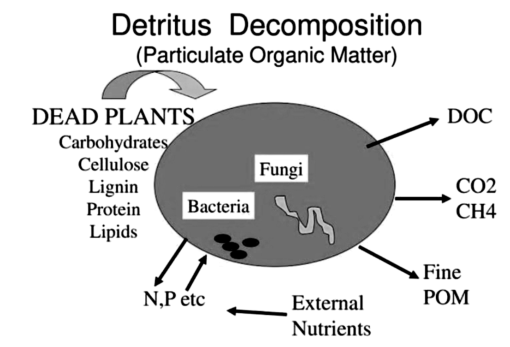260238
Match Column-I with Column-II. Select the option with correct combination.
| Column-I | | Column-II | |
| :--- | :--- | :--- | :--- |
| 1. | Standing state | p. | Mass of living
material at a given
time. |
| 2. | Pioneer
species | q. | Amount of nutrients
in the soil at a given
time. |
| 3. | Detritivores | r. | Species that invade
a bare area. |
| 4. | Standing crops | s. | Breakdown detritus
into
particles. smaller |
260238
Match Column-I with Column-II. Select the option with correct combination.
| Column-I | | Column-II | |
| :--- | :--- | :--- | :--- |
| 1. | Standing state | p. | Mass of living
material at a given
time. |
| 2. | Pioneer
species | q. | Amount of nutrients
in the soil at a given
time. |
| 3. | Detritivores | r. | Species that invade
a bare area. |
| 4. | Standing crops | s. | Breakdown detritus
into
particles. smaller |
260238
Match Column-I with Column-II. Select the option with correct combination.
| Column-I | | Column-II | |
| :--- | :--- | :--- | :--- |
| 1. | Standing state | p. | Mass of living
material at a given
time. |
| 2. | Pioneer
species | q. | Amount of nutrients
in the soil at a given
time. |
| 3. | Detritivores | r. | Species that invade
a bare area. |
| 4. | Standing crops | s. | Breakdown detritus
into
particles. smaller |
260238
Match Column-I with Column-II. Select the option with correct combination.
| Column-I | | Column-II | |
| :--- | :--- | :--- | :--- |
| 1. | Standing state | p. | Mass of living
material at a given
time. |
| 2. | Pioneer
species | q. | Amount of nutrients
in the soil at a given
time. |
| 3. | Detritivores | r. | Species that invade
a bare area. |
| 4. | Standing crops | s. | Breakdown detritus
into
particles. smaller |
260238
Match Column-I with Column-II. Select the option with correct combination.
| Column-I | | Column-II | |
| :--- | :--- | :--- | :--- |
| 1. | Standing state | p. | Mass of living
material at a given
time. |
| 2. | Pioneer
species | q. | Amount of nutrients
in the soil at a given
time. |
| 3. | Detritivores | r. | Species that invade
a bare area. |
| 4. | Standing crops | s. | Breakdown detritus
into
particles. smaller |

